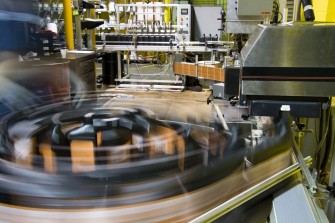In the world of industrial imaging, timing can be crucial. The difference between even a few milliseconds of capturing a moving item can vastly change the resulting image. For example, in applications such as factory inspection or speed enforcement traffic systems, if the camera does not start the exposure at a very precise time, the resulting image will be unusable. While delays can be accounted for within the system design, the time between the trigger (a hardware or software input) and the actual start and end of exposure is not always consistent and deterministic. Any fluctuation is difficult to resolve and can cause unavoidable issues in a vision system.
Only machine vision cameras are tuned with such timing considerations in mind. High quality, machine vision cameras can accept hardware input triggers (Optically Isolated and TTL) and a variety of software based triggers, ensuring that there are plenty of options available for interfacing a system with a camera. These cameras can also act as the central intelligence of a vision system by providing Optically Isolated or TTL based output strobe signals with microsecond accuracy that allow the operator to fine tune the delays to match the timing characteristic of the lighting.
When you send an electronic trigger input signal to an industrial camera, the camera will internally initiate the image capture and save it to its internal memory buffers. After the capture is complete, the image is then transferred to the host computer while it waits for more triggers. In this schema, you are effectively removing any inherent variability in the performance of the host computer out of the time critical part of the capture sequence.
In the same way that a machine vision camera can accept an input trigger, they can also be configured to send hardware triggers to external strobe devices. Normally strobe duration, exposure delay and strobe delay variables can be configured so that you can match the exposure to the peak intensity of your lighting type since each lighting technology will have different luminance output curves.
At Lumenera, we go to great lengths to design and manufacture cameras that are not only the quickest in the industry, but also the most reliable and deterministic. Each and every camera model and firmware is analyzed with high frequency oscilloscopes down to the microsecond.


